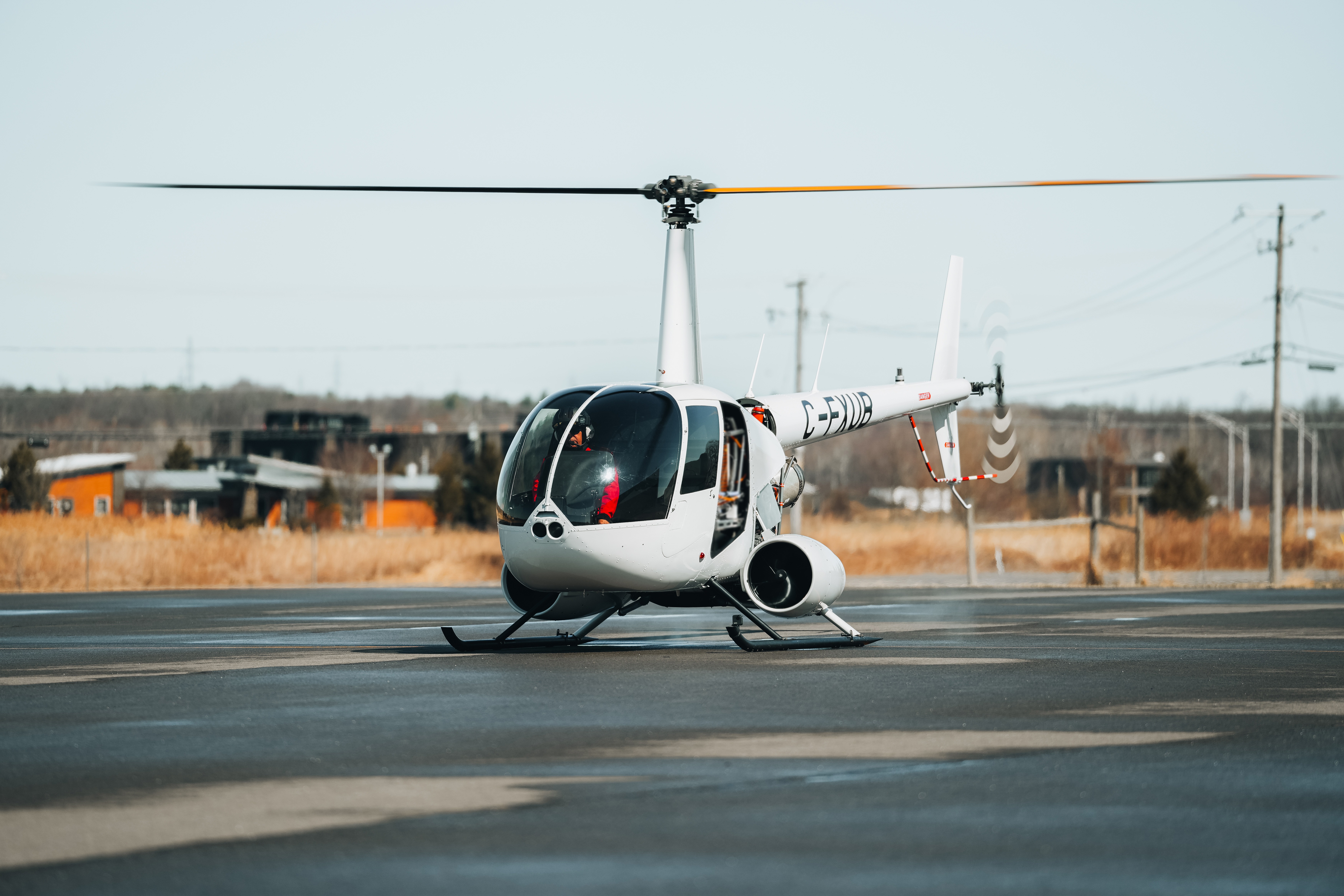“There’s no treaty signed about the sky. Indigenous people have the inherited right to participate in aerospace […] The skies belong to the indigenous peoples too.”
-Jacob Taylor
On November 25th, 2021, CAAM and Iskwew Air hosted the event Indigenous Peoples in AAM: Where is the opportunity?
The event was part of CAAM’s Uplift Series, which aims to give a stronger voice to groups that have not been heard in aviation yet – the groups we need for Advanced Air Mobility to succeed.
The speakers were: Teara Fraser (Iskwew Air), Joanne Tabobandung (FNTI), Matthew Gallina (CAP, ISETS), Jacob Taylor (Indigenous Aerospace), Layane Fernandes de Sousa Moura (Generation Power, ICE), Rocky James (SSPDP), and Darian Edwards (CAAM).
The following article will summarize what the speakers said during the event and explain a little more about what RAM is and what it can do.
“With the recent floodings [in BC], while flying to rescue people from flooded zones, I couldn’t stop thinking how AAM could help with the situation.”
-Teara Fraser
Regional Air Mobility (RAM), what is it?
Regional air mobility will allow you to make your next trip to a nearby town or city that usually takes you a few hours in a few minutes—opening possibilities for regional communities to see faster transportation.
The possibilities to uplift communities and people through RAM are limitless. It may seem like a dream or a very distant future, but it’s already happening!
Regional uses are already being used and implemented across Canada. Companies and Government partners are working on expanding our options for everyone.
“I really want to see indigenous peoples be the first to run an AAM company. And I see them already building the necessary infrastructure.”
-Teara Fraser
Companies continue developing and producing new technologies to help us make flying an ever-new way to travel into transportation networks.
Our focus is to make this new way of travel an everyday way to travel.
By making people’s lives easier, we also want to make sure it’s sustainable, clean for the environment, and efficient. Progress in industry and on multiple levels of Government is accelerating clean energy technology.
“We’re now finding the applications.”
-Darian Edwards
The RAM reality is much, much closer than you think.
“Equity, sustainability, indigenous views of respect towards the planet.”
-Teara Fraser
Clean energy
Historically, transportation has been one of the most significant contributors to greenhouse gases via vehicles, trains, and aircraft. Through cooperation and many stakeholders working to advance technology, clean energy is becoming the new norm.
“We must ensure history doesn’t repeat itself! That’s the importance of talking about AAM.”
-Jacob Taylor
Worldwide, Governments are creating projects to make clean energy a way of the future.
“It’s our responsibility to walk the talk. Conversations are important, but we have to make the changes from inside out.”
-Layane Fernandes de Sousa Moura
Even more remarkable, RAM has become increasingly green through clean energy technology.
“It relates to the ground, the air, the planet.”
-Rocky James
Next steps
“You have to communicate with the elders to start preparing.”
-Rocky James
Advancing technology, like progressive designs and lighter materials, and connectivity has expanded the ability to make RAM possible.
Collaborative expansion of governments and industry regarding uncrewed aircraft is also building the future.
“Employers must be trained to hire and retain indigenous talent.”
-Layane Fernandes de Sousa Moura
For example, the Canadian Government supports sustainable and Innovative Aviation technology in their mandates to greener energy options. Our Federal Government has updated their climate plan with goals to:
“Make strategic investments to strengthen Canada’s Green Aviation Leadership position.”
The Federal Government has committed $150 million to help the recovery of the aerospace sector through the Aerospace Regional Recovery Initiative.
The focus from the Government encourages the advancement of green energy capacities of electric and hydrogen-powered fuel cells and in zero-emissions aircraft.
“Policies have to be put in place to ensure equity.”
-Jacob Taylor
Through testing and studying Urban Advanced Mobility (UAM) projects, government bodies and advisors can shape the future regulation of UAM. Canadian Advanced Air Mobility (CAAM) member Indro Robotics was the first to receive a licence from Transport Canada. The permit allows Indro Robotics to transport goods with large drones commercially.
Much of the work that companies like Indro Robotics are doing lays the groundwork for UAM vehicles. Some larger manufacturers of flying vehicles aim to be certified by 2024, hoping to have travellers in cities commonly taking trips using these vehicles within the decade.
“Indigenous peoples have to fly the drone, not only load it.”
-Joanne Tabobandung
What is CAAM doing?
We’re helping to bring leading organizations together to get this new industry off the ground safely.
We’re creating partnerships with governments to help understand how this new industry could help Canadians.
We’re giving companies the opportunities to test and collaborate on this new industry together, one step at a time.
We’re sharing challenges with our members and partners to help everyone do the research needed to understand the opportunities and impacts of Regional Air Mobility.
We’re working together across many different organizations—CAAM’s 60+ member network is setting the standard for this new industry.
We’re a federal not-for-profit (NFP) with a vision of having every flight within 500kms operate with zero emissions by 2040 in Canada.
We’re focused on the studies and revenue-generating use cases applicable in each region of Canada—the work will be needed to help the industry move forward nationally and create a framework that will bring all of these efforts together.
We’re using Integrated Transportation Systems for passenger travel, improving cargo movements and emergency services; we see ways that this technology can help everyone.
We’re building on the growing momentum and resources in Canada; we hope that by 2040 that one in every five aircraft will operate with zero emissions.
We’re working to establish drone and electric/hydrogen-powered Vertical Take-Off and Landing (eVTOL) aircraft networks that share the fundamentals: Accessible, Equitable, and Intermodal.
We’re developing UAM through zero-emission initiatives. Ensuring this technology benefits all people, operating resiliently and sustainably.
But more importantly, with the Uplift series CAAM is fixing a historical mistake that Matther Gallina highlighted:
“Indigenous peoples are underrepresented! Indigenous peoples have to be on the frontline.”
-Matthew Gallina
CAAM also wants to:
“Push people, non-indigenous people to own their whiteness and privileges.”
-Rocky James
We also aim to:
“[…] disrupt the lack of equity.”
-Teara Fraser
And:
“Decolonization on AAM starts with talks like this.”
-Darian Edwards
What CAAM is doing is pushing AAM to become a reality while also fixing past mistakes by inviting minorities to discuss the future. Because as Jacob Taylor brilliantly stated:
“There’s no treaty signed about the sky. Indigenous people have the inherited right to participate in aerospace […] The skies belong to the indigenous peoples too.”
-Jacob Taylor
By Darian Edwards and Giovani Izidorio Cesconetto



